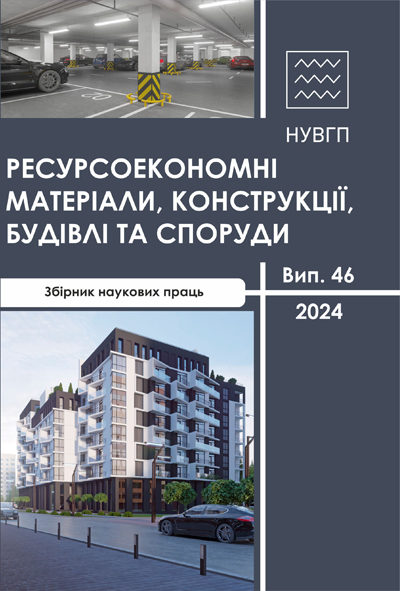FEATURES OF STRESS DISTRIBUTION NEAR INTERMEDIATE SUPPORTS OF CONTINUOUS PERFORATED BEAMS UNDER THE ACTION OF ASYMMETRIC LOAD
DOI:
https://doi.org/10.31713/budres.v0i46.18Abstract
The purpose of the work is to study the stress-strain state of parts of continuous perforated beams located immediately to the left and right of the intermediate support under the action of an asymmetric load in the spans. Data on the stress-strain state of various types of intermediate supports of two-span continuous perforated beams with a height of 300 to 900 mm were obtained as a result of their calculation by the finite element method in the "Lira" software complex under the action of an asymmetric load uniformly distributed in the spans, the value of which is calculated from the condition of occurrence of the limit state of the 1st group in the beams, namely the loss of bearing capacity due to the achievement of the limit values of normal stresses in the calculated cross section of the beam. It was established that the design of the intermediate support for beams of different heights, as in the case of symmetrical loading, significantly affects the values of the maximum deflections in the span of the beams and stresses in the calculated support sections of the beams. For beams with a height of 450, 600, 750 and 900 mm with various types of intermediate supports, the same regularities as for beams with a height of 300 mm are mostly preserved. Of course, the magnitudes of the calculated loads for them are greater, which also leads to greater magnitudes of stresses at the calculated points of the cross-sections. But none of these stresses exceeds the calculated resistance of the adopted C235 steel. The analysis of the deflection graphs of the loaded spans was performed by comparing them with the deflection graphs under the action of a symmetrical load in the spans. Moreover, for beams with a height of 300 to 600 mm, the deflections under the action of an asymmetric load are greater than for a symmetrical one, and only for sufficiently rigid beams with a height of 750 and 900 mm are they the same. The given analysis of the operation and stress-strain state of beams of different heights with different structural design of the supporting parts confirms the need for further numerical studies with simulation of the real conditions of bearing the beams and the real stiffness of the mounting joints on the supports.

